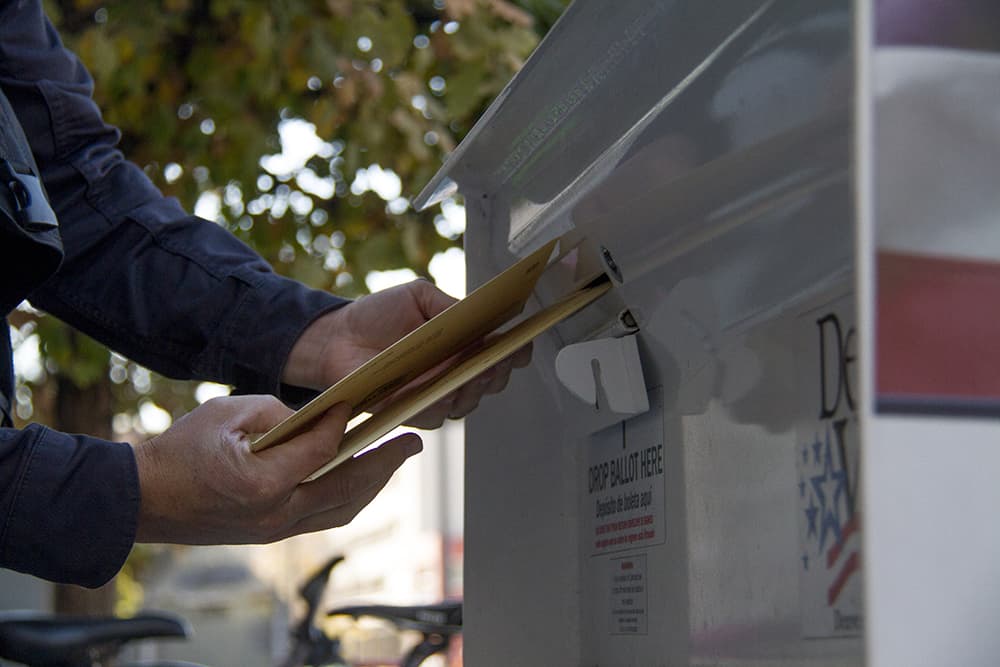
Democrats got out of the gate first, but Republicans have taken the lead in early voting over the weekend. As of Monday afternoon, registered Republicans had turned in 719,227 ballots to Democrats' 703,938 ballots, and unaffiliated voters had returned 598,820 ballots.
Does that mean Republicans are likely to prevail tomorrow? Maybe, but not necessarily.
Colorado wasn't yet an all-mail election in 2012, but Republicans held the lead in early voting in that year, when Barack Obama would go on to defeat Mitt Romney by five points here and, of course, win a second term.
Republicans also held the lead in early voting in 2014, an off-year election with a different demographic than presidential election years, and Sen. Cory Gardner managed to unseat incumbent Democrat Mark Udall.
"These early vote statistics don’t tell us a lot about Election Day, and you have such a large proportion of unaffiliated voters in Colorado, and it’s hard to tell which way they are leaning," said Seth Masket, a political science professor at the University of Denver. "Republicans have a modest lead in early voting, but those unaffiliated voters picked someone."
Those early vote numbers break down to 35 percent Republican, 34.3 percent Democrat and 29.2 percent unaffiliated, with unaffiliated voters taking up a larger share of the vote total as Monday progressed. Republicans had turned in 36.3 percent of ballots at this point in 2012 to Democrats' 35 percent.
David Flaherty, CEO of Magellan Strategies, a Louisville-based polling firm that posts daily analysis of returned ballots, said that traditionally in Colorado, the people who vote on Election Day are younger and more likely to be unaffiliated than the people who vote early, and in Magellan's polling this year, those groups prefer Clinton.
Magellan Strategies looked at Election Day turnout for 2008, 2012 and 2014 and found that on average, unaffiliated voters made up 37 percent of those who cast a ballot on the day itself. Voters aged 44 and younger, who tend to vote Democratic, made up 56 percent of Election Day voters, while those 65 and older, who lean Republican, made up just 7.5 percent of Election Day voters.
In contrast, a little less than 32 percent of those who have voted already this year are aged 44 and younger, and almost 29 percent of those have voted already are aged 65 and older.
Flaherty, himself a Republican, said there are some ways this year could be different than previous years. More Republicans could be having a hard time with their choices this year, leading to a late surge in Republican ballots.
"Does that mean that tomorrow, because everyone was agonizing over their ballot, Republican turnout will bump up? Or are they going to not vote at all for president?" he asked. "I don’t know. It’s possible. If it’s going to happen, it would be this year. But I don’t think it’s going to change that much."
It's also possible that a higher percentage of all the Democrats who will vote in this election have already voted, meaning Democrats have fewer voters waiting for them on Election Day. Or that more Republicans crossed party lines than in previous years.
But Flaherty said voting habits tend to be fairly stable, and he still expects to see a more Democratically inclined group of voters turning in their ballots on Tuesday.
(Reminder: You can register to vote on Election Day up until polls close at 7 p.m. And your ballot needs to be in the hands of elections workers by close of polls, so if you haven't voted yet, turn it in, don't mail it.)
There isn't a very precise way to see Latino turnout in Colorado -- that information isn't in voter registration records and last names don't show the whole picture. Flaherty expects the Latino share of the electorate to be larger than in 2012, but beyond that, he isn't making any projections one way or the other about a Latino surge in Colorado similar to what observers see in Florida or Nevada.
Recent polling has shown Clinton anywhere from tied to six points ahead of Trump in Colorado, and with states like New Hampshire looking vulnerable, Colorado has resumed new importance.
FiveThirtyEight is giving liberals fits with its projection that gives Trump a 31.5 percent chance of winning the election, and the volatility of the electoral college is one reason why the site gives Trump a higher chance than other sites. (Another reason is differences in methodology that have become rather heated lately.)
Here's how Nate Silver describes the relative importance of key swing states to a Clinton or Trump victory:
"The map is much broader than it was in 2012. Clinton’s 'firewall' has crumbled to some extent with the tighter polls in New Hampshire, although Nevada — where early-voting data portends a much more favorable outcome for Clinton than polls do — could potentially replace it. Thus, Trump would need to flip another blue state, with Pennsylvania, Michigan and perhaps Colorado being the best candidates. Clinton could hedge against any potential incursion by winning either Florida or North Carolina, however."
This story has been updated to include numbers as of 4 p.m. Monday.












